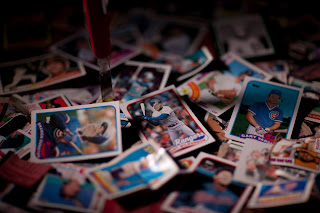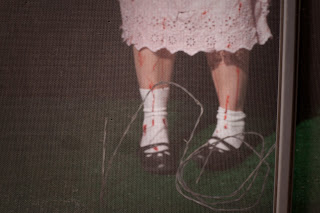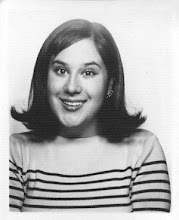11 May 2009
something to try over the summer
http://www.youtube.com/watch?v=YUPKSjALABA
(apologies for the link, the video is not embedd-able)
A Cautionary Video About America’s ‘Stuff’
The thick-lined drawings of the Earth, a factory and a house, meant to convey the cycle of human consumption, are straightforward and child-friendly. So are the pictures of dark puffs of factory smoke and an outlined skull and crossbones, representing polluting chemicals floating in the air.
Which is one reason “The Story of Stuff,” a 20-minute video about the effects of human consumption, has become a sleeper hit in classrooms across the nation.
The video is a cheerful but brutal assessment of how much Americans waste, and it has its detractors. But it has been embraced by teachers eager to supplement textbooks that lag behind scientific findings on climate change and pollution. And many children who watch it take it to heart: riding in the car one day with his parents in Tacoma, Wash., Rafael de la Torre Batker, 9, was worried about whether it would be bad for the planet if he got a new set of Legos.
“When driving by a big-box store, you could see he was struggling with it,” his father, David Batker, said. But then Rafael said, “It’s O.K. if I have Legos because I’m going to keep them for a very long time,” Mr. Batker recalled.
The video was created by Annie Leonard, a formerGreenpeace employee and an independent lecturer who paints a picture of how American habits result in forests being felled, mountaintops being destroyed, water being polluted and people and animals being poisoned. Ms. Leonard, who describes herself as an “unapologetic activist,” is also critical of corporations and the federal government, which she says spends too much on the military.
Ms. Leonard put the video on the Internet in December 2007. Word quickly spread among teachers, who recommended it to one another as a brief, provocative way of drawing students into a dialogue about how buying a cellphone or jeans could contribute to environmental devastation.
So far, six million people have viewed the film at its site, storyofstuff.com, and millions more have seen it on YouTube. More than 7,000 schools, churches and others have ordered a DVD version, and hundreds of teachers have written Ms. Leonard to say they have assigned students to view it on the Web.
It has also won support from independent groups that advise teachers on curriculum choices. Facing the Future, a curriculum developer for schools in all 50 states, is drafting lesson plans based on the video. And Ms. Leonard has a contract with Simon & Schuster to write a book based on the video.
The enthusiasm is not universal. In January, a school board in Missoula County, Mont., decided that screening the video treaded on academic freedom after a parent complained that its message was anticapitalist.
But many educators say the video is a boon to teachers as they struggle to address the gap in what textbooks say about the environment and what science has revealed in recent years.
“Frankly, a lot of the textbooks are awful on the subject of the environment,” said Bill Bigelow, the curriculum editor of Rethinking Schools, a quarterly magazine that has promoted “The Story of Stuff” to its subscribers and on its Web site, which reaches about 600,000 educators a month. “The one used out here in Oregon for global studies — it’s required — has only three paragraphs on climate change. So, yes, teachers are looking for alternative resources.”
Environmental education is still a young and variable field, according to Frank Niepold, the climate education coordinator at the National Oceanic and Atmospheric Administration. There are few state or local school mandates on how to teach the subject.
The agency is seeking to change that, but in the interim many teachers are developing their own lesson plans on climate change, taking some elements from established sources like the National Wildlife Federation and others from less conventional ones like “The Story of Stuff.”
Ms. Leonard is self-educated on where waste goes and worked for Greenpeace to prevent richer nations from dumping their trash in poorer ones. She produced the video, with the Free Range Studios company, and with money from numerous nonprofit groups; the largest single giver was the Tides Foundation. She did so, she said, after tiring of traveling often to present her views at philanthropic and environmental conferences. She attributes the response to the video’s simplicity.
“A lot of what’s in the film was already out there,” Ms. Leonard said, “but the style of the animation makes it easy to watch. It is a nice counterbalance to the starkness of the facts.”
The video certainly makes the facts stark and at times very political: “We’ll start with extraction, which is a fancy word for natural resource exploitation, which is a fancy word for trashing the planet,” she says at one point. “What this looks like is we chop down the trees, we blow up mountains to get the metals inside, we use up all the water and we wipe out the animals.”Mark Lukach, who teaches global studies at Woodside Priory, a Catholic college-preparatory school in Portola Valley, Calif., acknowledged that the film is edgy, but said the 20-minute length gives students time to challenge it in class after viewing it.
“Compared to ‘An Inconvenient Truth,’ ” he said, referring to Al Gore’s one-and-a-half-hour documentary on climate change, “it is much shorter and easier to compact into a class segment. You can watch it and then segue into a discussion.”
Mr. Lukach’s students made a response video and posted it on YouTube, asking Ms. Leonard to scare them less and give them ideas on how to make things better. That in turn inspired high school students in Mendocino, Calif., to post an answer to Woodside, with suggested activities.
Dawn Zweig, who teaches environmental studies at the Putney School, a private academy in Vermont, said that the very reason the video appealed to teachers — it shows students how their own behavior is linked to what is happening across the globe — could also raise sensitive issues. She said students, particularly affluent ones, might take the critique personally. “If you offend a student, they turn off the learning button and then you won’t get anywhere,” Ms. Zweig said.
Sometimes teachers observe the opposite: children who become environmental advocates at home after seeing the video. After Jasmine Madavi, 18, saw it last year in Mr. Lukach’s class at Woodside Priory, she began nagging her parents to stop buying bottled water. Her mother resisted, saying that filtered tap water, Jasmine’s suggested alternative, would not taste as good. But Jasmine bought the filter on her own, and the household is now converted.
“You just have to be persistent,” said Ms. Madavi, who is now a community college student. “When you use a water bottle, it just doesn’t disappear. That’s Annie’s message.”
Most parents take such needling with humor. But Mark Zuber, a parent of a child at Big Sky High School in Missoula, had a stronger reaction when a teacher showed the video to his daughter last year. “There was not one positive thing about capitalism in the whole thing,” Mr. Zuber said.
Corporations, for example, are portrayed as a bloated person sporting a top hat and with a dollar sign etched on its front.
He described the video as one-sided. “It was very well done, very effective advocacy, but it was just that,” he said.
Mr. Zuber argued before the Missoula County School Board that the way in which “The Story of Stuff” was presented, without an alternative point of view, violated its standards on bias, and the board agreed in a 4-to-3 vote.
Still, Ms. Leonard is hoping the video will circle the globe. “I’ve heard from teachers inPalestine and Papua New Guinea,” she said. “It is just spreading and spreading.”
Dieter
by Margaret Peña





The Cows
by Margaret Peña
She fought her first battle with the cows when she was four. They were amazing, grazing contentedly in the field. She and her mother and father lived in a new housing development that occupied former farmland. Pastures still surrounded the development on two sides and they were enclosed by barbed wire. Standing on the fence to get a better view, she snagged her new outfit which her mother had stayed up all night to sew just the day before. The more she struggled, the more entangled she became. She was firmly ensnared, her outfit in tatters, before she was rescued. Blood streamed from the hundreds of cuts. She lost the battle of the fence. The tetanus shot was painful. The second time occurred when she was six. She was locked in with milk cows who returned from the fields in the evenings to the milking barn, a huge structure with cows on either side. Large stacks of hay occupied one end of the barn which was deeply shadowed and smelled of manure. The barn was claustrophobic when the doors were closed in spite of its immense size. Cows now create feelings of anxiety in her.



Magda/The Collector
By Danielle Brownsberger
Magda commands an exceptional gravitational pull. Compelled toward her plump white form, strange satellites orbit around her. She has amassed minor objects, rounding up bits of string, safety pins, paper clips, coins, calculators, puzzle pieces and keys, endlessly. Stockpiles of toiletries, toilet paper, and tins of fruit are stcked against disaster. Over the years, Magda has assembled a more costly cache of acquisitions. Titles and deeds, burial plots, times shares, and three blue jean boyfriends have come to compliment her bizarre menagerie. She rotates around endless rows of shelves and lifts her eyebrows at forgotten baubles.







